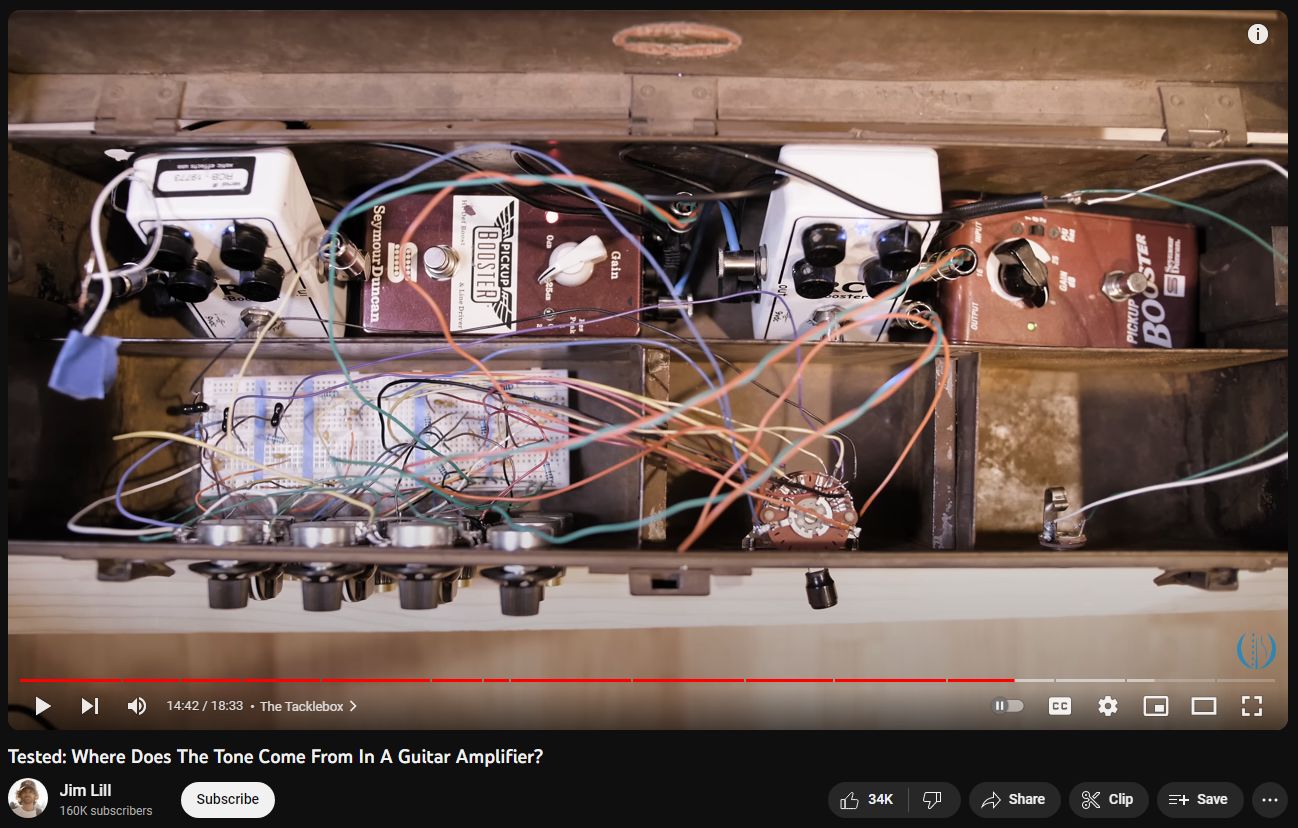(( Do not miss the microphone comparison, speaker cabinet comparison, string comparison, etc linked at the end of this post, which are all equally revelatory. ))

From video comments —
”I am just a performer, I know nothing about circuits but in one summer I reversed engineered the whole guitar industry and made it open source to everyone'”
“As a PhD physicist, I just want to add that this dude’s ability to design an informative experiment controlling for so many variables is better than most of my colleagues”
Flattening / nulling-out the EQ / tone stack causes amps to sound incredibly similar also.
Order of EQ – Distortion, or Distortion – EQ matters much, too.
Here the guy builds an amp-cloner made of pedals.
Can you hear any tonal difference? LOL


Same guy discovers the same thing in guitar tone.
Same guy discovers same thing in speaker cabinets.
Same guy, RE microphone:
Same guy, RE strings:
And he has a few more, too. All smart, informative, and pretty much proof-positive.
And don’t miss this:
===
If TIMBRE is the list of ingredients, TONE describes the cooking of those ingredients … ?
Timbre and tone are both terms used in music to describe aspects of sound quality, but they refer to slightly different characteristics:
1. **Timbre:** Timbre, also known as “tone color” or “quality of sound,” refers to the unique characteristics of a sound that distinguish it from other sounds, even when they have the same pitch and loudness. It’s what allows us to differentiate between different instruments or voices, even when they’re playing or singing the same note. Timbre is influenced by various factors, including the harmonic content, envelope (attack, sustain, decay), and spectral content of a sound.
2. **Tone:** Tone, on the other hand, typically refers to the specific pitch or frequency of a sound. It’s a more specific term that describes the fundamental frequency of a sound wave, which determines its perceived pitch. For example, when someone refers to a “high tone” or a “low tone,” they’re talking about the relative pitch or frequency of the sound.
In summary, while both timbre and tone are related to aspects of sound quality, timbre refers to the unique characteristics of a sound that distinguish it from others, while tone refers specifically to the pitch or frequency of a sound.
Hear how a glass guitar has a glassy tone — https://soundquality.org/2023/12/glassy-tone-from-glass-guitar-dispels-the-dispel/